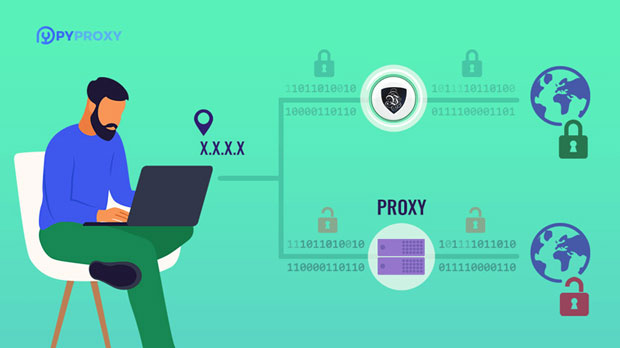Are the best residential Socks5 proxies suitable for streaming unlocking and online gaming?
Residential socks5 proxies have become a popular tool among internet users who seek enhanced privacy, bypass geographical restrictions, or improve their online gaming experience. These proxies are often touted for their ability to disguise the user's IP address, providing a layer of anonymity and access to restricted content. However, when it comes to streaming services and online gaming, the question arises: Are they the best option for these specific activities? This article will analyze the advantages and potential drawbacks of using residential SOCKS5 proxies for streaming unlocking and online gaming, offering insights into their effectiveness and whether they meet the needs of users in these contexts. Understanding Residential SOCKS5 ProxiesBefore diving into whether residential SOCKS5 proxies are suitable for streaming or gaming, it’s important to understand what they are and how they function. SOCKS5 is a versatile proxy protocol that facilitates the routing of internet traffic through a third-party server, masking the user's original IP address. Unlike HTTP or HTTPS proxies, which are limited to web traffic, SOCKS5 proxies can handle various types of internet traffic, such as P2P, email, and gaming data.Residential SOCKS5 proxies differ from traditional datacenter proxies in that they use IP addresses provided by real Internet Service Providers (ISPs) rather than data centers. This makes the traffic appear more natural and less likely to be flagged by websites or services as coming from a proxy. The real question, though, is how well these proxies perform for activities like streaming content and online gaming, which often require high speeds, minimal latency, and the ability to bypass geographic restrictions.The Role of Residential SOCKS5 Proxies in Streaming UnlockingStreaming services such as Netflix, Hulu, BBC iPlayer, and others frequently impose geo-blocking restrictions on their content. This means that users in one country may not have access to content that is available in other regions. By using a proxy server, users can route their internet traffic through a different country and access content that would otherwise be unavailable.For streaming purposes, residential SOCKS5 proxies have distinct advantages. Their ability to appear as a regular residential user makes them less likely to be detected by streaming services compared to datacenter proxies or VPNs. Since streaming platforms continuously monitor for unusual patterns in IP addresses—such as a high number of requests from a single datacenter— residential proxies are generally more effective at bypassing these restrictions. However, while residential SOCKS5 proxies can unblock content, they do not guarantee seamless streaming performance. The quality of the streaming experience depends on the proxy’s location, speed, and reliability. In some cases, users may experience buffering or slow loading times, especially if the proxy server is located far from the streaming service’s server or if there’s high network congestion.Performance and Speed Considerations for StreamingOne of the most important factors for streaming is speed. High-definition video streaming demands a fast and stable internet connection, and any disruption in speed can result in buffering, degraded quality, or interrupted playback. Residential SOCKS5 proxies, while more reliable than datacenter proxies, still introduce an extra hop in the user’s connection, which can sometimes lead to slower speeds.For users streaming 4K content or engaging in other data-intensive activities, residential SOCKS5 proxies may not always offer the best experience. While some proxies are optimized for high-speed connections, others may cause noticeable latency or packet loss, leading to frustrating interruptions. It’s essential to consider the proxy’s proximity to the desired streaming service and to test the connection before committing to long-term use.Residential SOCKS5 Proxies for Online GamingOnline gaming is another area where proxies are frequently used. Gamers often use proxies to reduce ping times, access region-specific game servers, or protect their privacy while playing. When considering SOCKS5 proxies for gaming, there are several factors to take into account.First, the proxy's speed and latency are crucial for a good gaming experience. Residential SOCKS5 proxies, due to their routing through residential ISPs, typically offer lower latency than datacenter proxies. This is particularly beneficial for games that require fast reflexes and real-time actions. Using a proxy with low latency can help reduce lag, leading to smoother gameplay and a more enjoyable experience.Another consideration is the proxy's ability to bypass geo-restrictions on gaming servers. Many games lock content or restrict access to certain regions. With a residential socks5 proxy, users can simulate being in a different country, allowing them to access exclusive content or servers unavailable in their actual location.However, just like streaming, the use of proxies for gaming comes with potential drawbacks. While residential SOCKS5 proxies may reduce the chances of being detected or blocked by gaming servers, they still introduce some level of latency, which could impact gameplay if the proxy is not well-optimized for gaming. Moreover, the added complexity of routing traffic through a proxy can sometimes cause connection instability, resulting in disconnects or dropped packets.Privacy and Security in Online Gaming and StreamingWhile speed and performance are critical, privacy and security are also essential when using proxies for streaming or gaming. Residential SOCKS5 proxies are more secure than traditional proxies because they mask your real IP address, making it difficult for websites, services, or even malicious third parties to trace your online activities back to you. This is particularly beneficial for users who wish to maintain anonymity or avoid targeted ads while streaming or gaming.However, it is important to note that SOCKS5 proxies, by design, do not encrypt traffic. Unlike a VPN, which encrypts all data, SOCKS5 only routes traffic through an intermediary server without securing the data itself. This can leave users vulnerable to certain types of cyber threats, particularly on public or unsecured networks. For users who prioritize security, especially when gaming or streaming sensitive content, it may be advisable to use additional encryption tools or consider a different proxy protocol with built-in encryption.Pros and Cons of Residential SOCKS5 Proxies for Streaming and GamingTo summarize, residential SOCKS5 proxies have both strengths and weaknesses when used for streaming unlocking and online gaming. Let’s break down the pros and cons:Pros:- Bypass Geo-blocking: Residential SOCKS5 proxies are highly effective at bypassing geographical restrictions, making them ideal for accessing content on streaming platforms or regional gaming servers.- Better Detection Resistance: They are less likely to be detected or blocked compared to datacenter proxies, providing a more reliable experience.- Improved Privacy: They offer a higher level of anonymity than regular proxies, masking your real IP address.Cons:- Reduced Speed and Latency: While residential SOCKS5 proxies can offer relatively low latency, they may still introduce slowdowns compared to direct connections, especially when streaming high-definition content or playing fast-paced online games.- Potential Connection Instability: Depending on the quality of the proxy service, users may experience connection drops or lag spikes.- Lack of Encryption: SOCKS5 proxies do not encrypt traffic, leaving users vulnerable to certain security risks.ConclusionIn conclusion, residential SOCKS5 proxies can be a useful tool for both streaming unlocking and online gaming, but they come with certain limitations. For users seeking to bypass geo-restrictions and access content or servers from other regions, these proxies offer a good balance of anonymity and reliability. However, for those who prioritize high-speed performance, especially when streaming in 4K or playing fast-paced online games, the potential for slower speeds and increased latency may be a concern.Ultimately, the suitability of residential SOCKS5 proxies depends on the user’s specific needs and priorities. For casual streaming or gaming, they can be an excellent choice. For more demanding tasks that require minimal delay and high performance, additional optimization or a different solution may be necessary. As with any proxy service, it’s essential to test the performance before relying on it for long-term use.
2024-12-30
























































